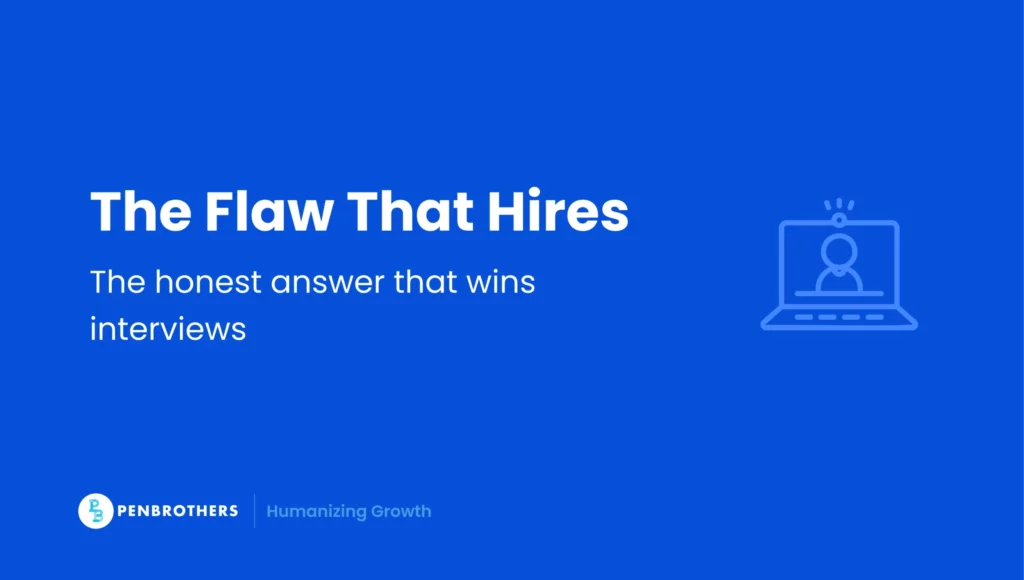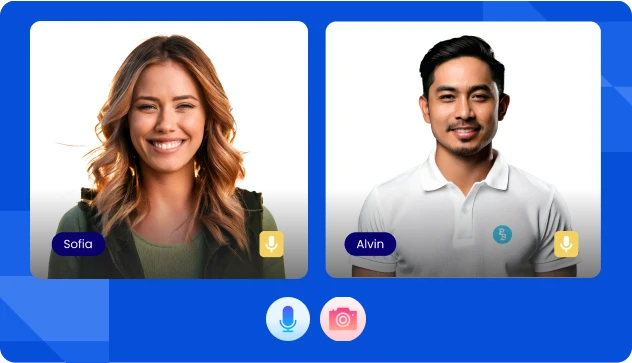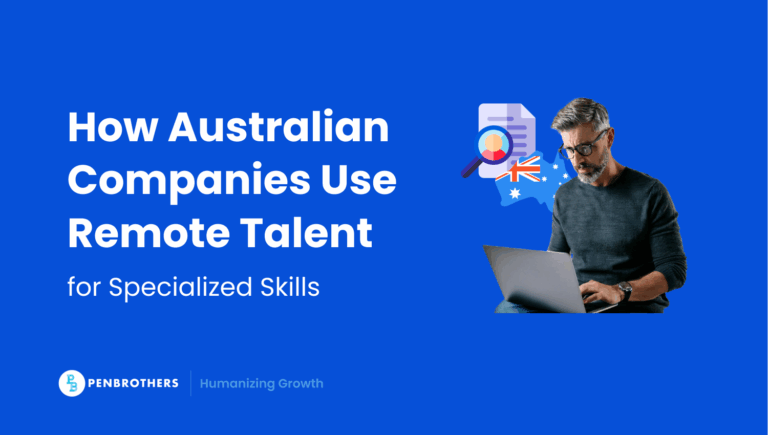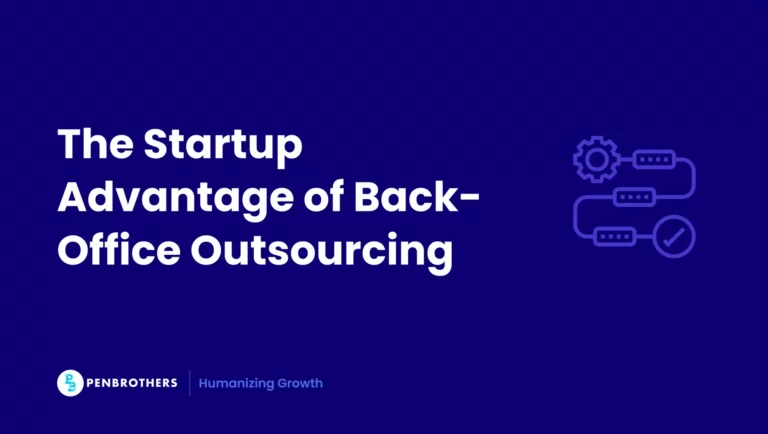Key Takeaways
- A Strategic Test of Self-Awareness, Not a Trap: The “what’s your greatest weakness?” question is a strategic test of your self-awareness, coachability, and growth mindset. Hiring managers are not looking for a perfect candidate, but for someone who can honestly reflect and actively improve.
- Avoid Clichés and Veiled Strengths at all Costs: The most common answers, such as “perfectionism,” “I work too hard,” or “I care too much,” are immediate red flags for interviewers. These cliché responses sound insincere and demonstrate a lack of genuine self-reflection.
- Structure Your Answer to Demonstrate Growth: A powerful and credible answer has a clear, three-part structure. It acknowledges a real but non-critical weakness, describes the specific, concrete actions you have taken to improve, and shows measurable progress or a clear learning outcome.
- Tailor Your Weakness to Your Role and Seniority Level: Your answer should be authentic and relevant to your career stage. An individual contributor might discuss developing a new technical skill, while a senior leader should address a more strategic challenge, such as learning to delegate more effectively or managing ambiguity in decision-making.
Why Weaknesses Still Matter Even for Experienced Professionals
Seasoned professionals often think they’ve outgrown the “what’s your greatest weakness?” question. But interviewers continue to ask it because it reveals three key things: strategic self-awareness, how you fit into team dynamics, and your coachability. Hiring managers aren’t looking for perfection. They’re looking for people who can evolve with the role. The best answers don’t just acknowledge a flaw; they align it with job success.
This guide walks you through how to frame your weaknesses with intention, insight, and impact, no matter your level or industry. You’ll also get a checklist to help you navigate the “weakness in job interview” question.
The Anatomy of a Strategic Weakness
Before you choose a weakness to share, it helps to know what makes a great one. Strategic weaknesses follow a clear pattern and signal readiness for growth.
Great weakness answers follow a simple but powerful three-part formula:
- Non-critical but relevant to role growth
- Rooted in feedback or data (not vague self-reflection)
- Tied to a clear learning loop or measurable progress
Example: Instead of saying “time management,” try: “I had to scale my project management systems after our team doubled in size, and it took a quarter to fully adapt.”
When you frame weaknesses this way, you move from generic to genuinely strategic. Now let’s look at what to avoid.
Common Mistakes Experienced Candidates Make
Even top-tier candidates fall into traps when answering this question. Recognizing these missteps helps you avoid common pitfalls.
- Over-engineering weaknesses to sound fake (e.g., “I care too much.”)
- Using outdated examples that don’t reflect your current level
- Avoiding leadership-context weaknesses like delegation or ambiguity in decision-making
- Missing the opportunity to showcase a growth mindset
Avoiding these mistakes clears the way for more credible, role-aligned answers, which we’ll explore in the next section.
Related: How to Answer “Why Should We Hire You” Effectively
What Is the Most Common Weakness?
The most commonly cited weakness in interviews is “perfectionism,” followed by “working too hard” and “caring too much.” These responses have become clichés that immediately signal to hiring managers that you’re avoiding genuine self-reflection.
Why these common answers backfire:
- They sound rehearsed and insincere
- They’re often veiled strengths, not actual weaknesses
- They don’t demonstrate real self-awareness or growth
- Hiring managers have heard them countless times
Other overused weaknesses to avoid:
- “I’m too detail-oriented”
- “I have trouble saying no to projects”
- “I’m impatient with slow processes”
- “I’m too honest/direct”
Instead of relying on these tired examples, choose authentic weaknesses that show genuine areas for development. The best 3 weaknesses job interview examples come from real situations where you’ve recognized a limitation and taken concrete steps to improve.
Focus on recent, relevant challenges you’ve faced and the learning process you’ve embraced, rather than generic weaknesses that every candidate mentions.
Tiered Weakness Examples by Role Type
One-size-fits-all doesn’t work for weaknesses. Tailor your answer to your current career stage and function for maximum impact.
A. Individual Contributor (IC) Level
- Inexperience with emerging tools (e.g., learning Figma after years on Photoshop)
- Difficulty in asking for task clarification early
- Over-researching before acting, causing project delays
B. Mid-Level Management
- Struggling to delegate in the first year of managing
- Getting too involved in tactical work and delaying strategic planning
- Balancing coaching with holding underperformers accountable
C. Senior Leadership / Executives
- Prioritizing speed over consensus in high-stakes decisions
- Scaling communication systems too slowly in hybrid teams
- Waiting too long to ask for support in organizational change
These examples help you ground your answer in role-appropriate self-awareness. Next, let’s align your weakness with the actual job you’re applying for.
Related: Questions to Ask HR During Your Job Interview
Role-Aligned Answer Frameworks
Not all weaknesses are equally effective. The most strategic ones speak directly to what the role needs and how you’ll grow into it.
A. Identify Strategic Weaknesses from Job Descriptions
- Look for signals: Does the role require autonomy, cross-functional leadership, or technical depth?
- Cross-reference with challenges you’ve recently faced. Your weakness should highlight readiness for this role’s next level.
B. Use PAR or CAR Frameworks
- PAR (Problem, Action, Result) and CAR (Challenge, Action, Result) help build structured, credible answers.
Example: “I initially struggled with stakeholder alignment (Problem). I implemented a weekly sync and stakeholder map (Action). Within two months, project approval rates improved by 30% (Result).”
Related: Why PAR and CAR work better than the STAR method?With your weakness aligned and structured, let’s explore what hiring managers actually look for in a great answer.
What Hiring Managers Actually Want to Hear About Your Weakness
Understanding what hiring managers value helps you reverse-engineer a strong response. Data from recruiter surveys reveals what sets top candidates apart. Strong answers are based on these parameters:
- Matched to your seniority level
- Free of blame or deflection
- Show growth via metrics or behavior change
Now that you know what makes a compelling answer, here are seven real-world examples tailored to different industries.
7 High-Impact Weakness Sample Answers by Industry
Each industry values different competencies. Use these tailored examples to craft a weakness that feels authentic and strategic to your field.
1. Creatives/Marketing
“In the past, I focused more on creative execution than campaign performance data. I took a digital analytics course and now incorporate metrics in my early brainstorming phase.”
2. Tech
“I used to over-engineer features. A senior dev flagged it during a sprint retro. I now build MVPs and gather early feedback before scaling.”
3. Sales
“My follow-ups were inconsistent across regions. I built a CRM pipeline view by region and created templates. Conversion rates improved 15% in APAC.”
4. Finance/Accounting
“Early in my role, I underestimated the lead time needed for cross-departmental approvals. I revised my forecasting calendar to include buffer time.”
5. HR
“I struggled to balance empathy with compliance in sensitive terminations. I now involve a legal consultant early and prepare talking points beforehand.”
6. Remote/Hybrid Environments
“I assumed messages landed clearly on Slack. After feedback, I started summarizing next steps in follow-up emails and added async check-ins.”
7. Career Shifter Example (Cross-Industry)
“Coming from education, I had to adjust to fast feedback loops in tech. I joined an agile bootcamp and started sprint journaling to keep pace.”
Now that you’ve seen great examples, it’s time to explore more advanced answers that most candidates overlook.
What Is Your 3 Weaknesses’ Best Answer?
When interviewers ask for three weaknesses, they’re testing your self-awareness and honesty while ensuring you won’t repeat the same generic answer three times. Your 3 weaknesses job interview examples should span different competency areas to show comprehensive self-reflection.
Structure your three weaknesses strategically:
Technical/Hard Skills Weakness: Choose something learnable that doesn’t impact core job requirements. Example: “I’m still developing my advanced Excel modeling skills after transitioning from Google Sheets.”
Soft Skills/Process Weakness: Focus on communication, organization, or collaboration. Example: “I sometimes provide too much context in emails when brief updates would be more effective.”
Leadership/Growth Area: Show awareness of development needs. Example: “I’m working on delegating more effectively as I move into senior roles.”
Avoid listing three weaknesses in the same category or choosing contradictory examples that might confuse your narrative. Each weakness should demonstrate different aspects of your professional growth journey.
How Do I Turn a Weakness Into a Positive?
Transforming weaknesses into positives requires reframing them as growth opportunities rather than fundamental flaws. The key is showing active improvement while connecting your development to job success.
Start with the growth context: Begin by explaining what triggered your awareness of this weakness—feedback from a manager, project outcome, or self-reflection during a role transition.
Highlight your learning process: Describe specific actions you’ve taken, such as training, mentorship, process changes, or system implementations. Concrete steps demonstrate commitment to improvement.
Show measurable progress: Whenever possible, include outcomes. Instead of “I’m getting better at public speaking,” try “After joining Toastmasters, I now confidently present to groups of 20+ people.”
Connect to role value: Link your improved weakness to how you’ll contribute to the new position. Your development story should show you’ll continue growing in the role you’re interviewing for.
This approach transforms 3 weaknesses job interview examples from potential red flags into evidence of your adaptability and commitment to professional development.
Advanced Weakness Types Most Candidates Avoid (But Shouldn’t)
High-level candidates can stand out by choosing advanced, nuanced weaknesses that show emotional intelligence and cross-cultural awareness.
- Cultural adaptability: “After working mostly in Southeast Asia, I underestimated direct feedback styles in EU markets. I now preface communication with cultural norms checks.”
- Matrixed stakeholder alignment: “In global roles, I missed early alignment with dotted-line leaders. I introduced pre-kickoff 1:1s and shared OKR maps.”
- Emotional regulation under pressure: “I used to shut down during crisis escalations. After coaching and retros, I learned to verbalize priorities calmly under stress.”
These advanced answers show maturity, context, and leadership-level thinking. But not every answer works. Next, let’s go over what to avoid.
Related: How to Follow Up Your Job Interview (Without Sounding Pushy)
What You Should Never Ever Say
Certain answers are now red flags for hiring managers. Knowing what to avoid is just as important as knowing what to say.
- Cringe answers: “I’m a perfectionist,” “I work too hard,” “I’m an overachiever.”
- Humor fails: sarcasm about laziness or procrastination
- Red flags: blaming others, claiming to have no weaknesses, vague self-help talk
You now know what great and poor answers look like. Let’s wrap it up with a checklist to test your final response.
Weakness Interview Checklist: Final Self-Review Before the Interview
Before your next interview, use this checklist to review your answer. Better yet, download the full version to keep refining.
Use this quick guide (or download the full checklist):
- Is it relevant to the role?
- Is it authentic but not harmful?
- Does it reflect feedback, data, or growth?
- Can you tell it in a structured way (PAR/CAR)?
- Would a hiring manager believe and respect it?
Download the Best Answers to Weakness in Your Job Interview
Once you’ve reviewed your story against this checklist, you’re ready to answer the question with confidence.
Find more interview tips here:
Conclusion
Being honest about your weaknesses isn’t a liability. It’s a leadership skill. Great candidates don’t hide flaws; they show how they learn from them. Whether changing industries or climbing the leadership ladder, a compelling weakness answer sets you apart.
Need help refining your story? Practice with a coach or explore open roles where your growth mindset fits right in.
Frequently Asked Questions
They are primarily evaluating three key qualities: your self-awareness (do you accurately know your areas for growth?), your honesty, and your coachability (do you actively take steps to improve?). They are looking for evidence of a growth mindset, not a candidate who claims to have no flaws.
A strong and credible answer follows a simple and effective formula:
1. State a genuine, non-critical weakness that is relevant to your professional growth.
2. Explain the specific actions you have taken to address it, such as taking a course, seeking feedback, or implementing a new process.
3. Describe the positive result or progress you have made as a result of your efforts.
You should avoid any clichés that are widely seen as disguised strengths. The most common answers to avoid are “I’m a perfectionist,” “I work too hard,” “I care too much,” and “I have trouble saying no to new projects.”
You should choose three weaknesses from different competency areas to demonstrate a comprehensive sense of self-awareness. A good strategy is to select one technical or hard skill that is learnable, one soft skill or process-related weakness (such as public speaking or delegation), and one broader leadership or personal growth area.
The key is to frame the weakness as a growth opportunity, not as a fundamental flaw. Focus on your learning process. Explain what made you aware of the weakness, describe the concrete steps you took to improve, and, if possible, show the measurable progress you have made. This turns the story from one of a flaw to one of adaptability and commitment to professional development.






